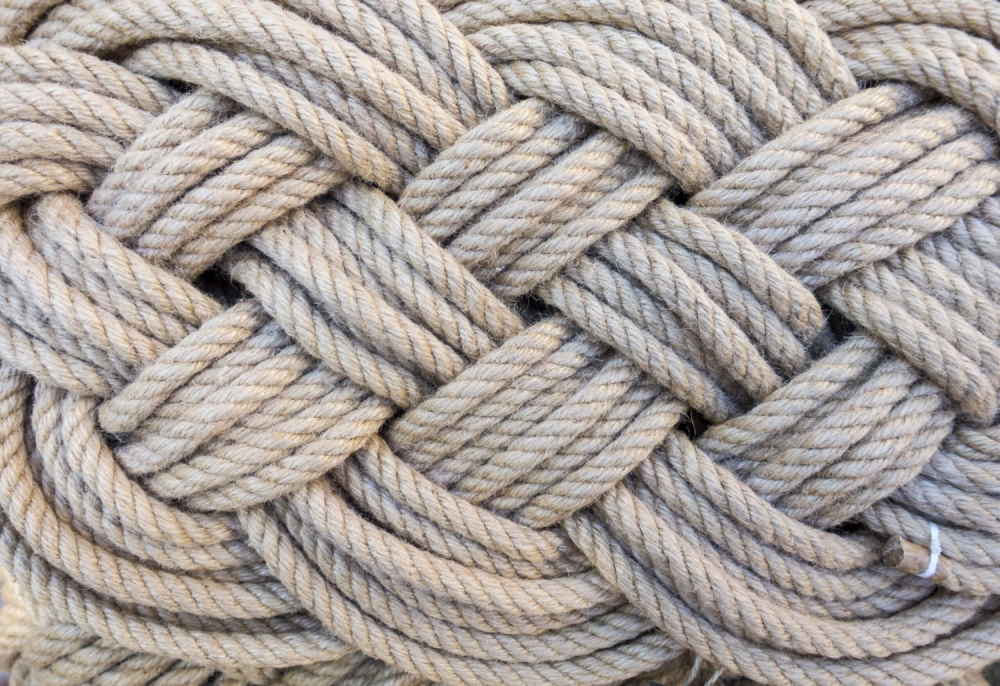Generally speaking, fabrics are separated into two main categories; natural and synthetic. Sometimes, they can also be a blend of the two, depending on the application, but both come with their own important application across many industries for a variety of reasons. In this helpful guide, we provide insight into the key differences between natural and synthetic fibres, highlighting their important applications, benefits and composition.
What Are Natural Fibres?
Fibres that are composed entirely of natural materials, such as plants, animals or minerals, are known as natural fibres. These natural materials are later spun into yarns and threads that are delicately woven or knit into natural fabrics. Generally, natural fibres are composed of either animal-based or plant-based natural fibres and are categorised as such, with animal-based natural fibres including silk and wool, whilst plant-based fibres include cotton and jute. Below, we take a closer look at some of the different types of natural fibres available, highlighting their key applications and benefits.
Cotton
Derived from the cotton plant, cotton fabric is composed of plant fibres primarily composed of cellulose, a soft and fluffy material that is highly durable. For this reason, cotton fabric is typically used to make cotton rope, clothing and undergarments, such as cotton t-shirts, denim and canvas shoes. Not only this, but cotton is one of the most commonly used materials for underwear, socks and of course, towels.
Silk
Rapidly produced by insects as a material for their nests and cocoons, silk is a natural fibre that contains a protein called fibroin, which provides that famous shine and softness the material is known for. The most common type of silk is made by silkworms and is used for bed sheets, clothing and upholstery among many others. Silk has become a highly popular material at home, to create lavish furnishings, but has many practical applications too, including in bike tyres and parachutes.
Wool
A highly common and important textile made from the hair of many animals, including sheep, goats, llamas and alpacas, wool is well-known for its durability, warmth and water-resistant qualities. Wool is used primarily for making jumpers, cardigans and coats, as well as carpets, blankets, furniture and upholstery. Wool is one of the oldest and most used materials the world over and is still used as the primary material in roof insulation, helping to keep homes warm over the winter.
Jute
A popular textile used to make burlap sacks and rugs, jute is a coarse natural plant fibre derived from the jute plant. Jute’s primary use is in providing burlap sacks and packaging for a wide range of industrial and agricultural commodities that require bags, sacks and wrappings.
Linen
Derived from the flax plant, linen is a lightweight, but highly durable fabric used for clothing and bed sheets due to its breathable qualities. Linen is naturally hypoallergenic and an ideal material for clothes to be worn in warm weather. Expensive and produced in relatively small qualities, linen is considered a luxury material but has many applications, from bed sheets and bathroom towels to clothes, napkins and tablecloths.
Advantages Of Natural Fibres
Generally considered far more eco-friendly and durable, natural fibres are highly popular for many homeowners seeking luxury cotton, linens and more at home. Below, we outline the considerable advantages of choosing natural fibres, highlighting their key applications and vital benefits.
Absorbent
One of the most significant advantages of using natural fibres is their incredibly high absorbency levels. This is as the fibres themselves, both in plant and animal variations, have a natural affinity with water. For this reason, natural fibres, such as cotton, are used regularly for bath towels, tea towels and bed sheets, offering high absorbency and durability to help dry surfaces, absorb spills and receive consistent use.
Eco-Friendly
Requiring far fewer chemicals during the production process, natural fibres, therefore, have a smaller impact on the environment than synthetic fibres and are considered an eco-friendly alternative. However, do consider that some natural fibres have a greater environmental impact than others, with some plants requiring more water.
Durable
As mentioned, many natural fibres are derived from cellulose, a highly durable molecule that has incredible strength. This means they can last an extremely long time.
What Are Synthetic Fibres?
Composed primarily of synthetic materials that are typically formed through a chemical process, synthetic fibres are extracted using a spinneret to transform polymers into fibres. Synthetic fibres are considered a more cost-effective and easily mass-produced alternative to natural fibres but generally offer less comfort, longevity and appeal. Below, we take a closer look at some of the different types of synthetic fibres available, highlighting their key applications and benefits.
Polyester
Created from coal and petroleum, polyester is a synthetic fibre that is not particularly eco-friendly but is a highly durable material. Ideal for winter; polyester won’t absorb liquids and isn’t breathable, but is a highly common material used for fashion and sportswear clothing, bed sheets, sleeping bags, footwear, luggage bags, upholstery and even film. Polyester is a highly popular material for many applications due to the fact that the fibres are thermoplastic, or heat-sensitive, meaning they can be shaped easily for different purposes.
Rayon
Although rayon is actually derived from wood pulp, a natural plant fibre, it’s still considered at least a semi-synthetic material as it requires chemicals such as sodium hydroxide and carbon disulfide in the production process. Rayon is generally used as a synthetic imitation of silk, wool or other natural fibres with examples such as modal, viscose and lyocell.
Spandex
Famed for its incredible elasticity, Spandex, sometimes referred to as Lycra or elastane, is a synthetic fibre composed primarily of polyurethane. First invented in a laboratory in Virginia in 1959, Spandex is recognised for its incredible stretchiness and is commonly used to create uniforms for ballerinas, cyclists and swimmers.
Acrylic Fibres
Composed of polymers formed by acrylonitrile or vinyl cyanide, acrylic fibres are primarily used for imitation wool or creating fake fur and fleece. Offering excellent heat retention qualities, acrylic fibres are soft, lightweight and extremely comfortable.
Microfibres
Highly popular in cleaning products and clothing, due in no small part to their dirt trapping capabilities, microfibres are typically made from polyester and regularly used as towels for washing cars or windows.
Advantages Of Synthetic Fibres
Considered a cheaper alternative to natural fibres for daily use, synthetic fibres offer many advantages. Below, we highlight some of the essential applications and benefits of using synthetic fibres for your clothing, upholstery and more.
Cost-Effective
As you’d expect, natural fibres are far more expensive to produce than a synthetic equivalent and for this reason, they are considered the cost-effective solution to natural fibre products. Synthetic fibres are designed specifically to be a cost-effective imitation of natural fibres such as wool and silk, to be used as a cheaper material for bed sheets, upholstery and more.
Stain-Resistant
Many synthetic fibres are designed to be entirely stain-resistant, with most offering greater stain resistance than their natural fibre substitutes. This makes synthetic fibres an ideal solution for clothing that is to be worn daily, or for bed sheets and linen alternatives.
Waterproof
As an extension of the above, many synthetic fibres are designed to be entirely waterproof, which is exactly why they are so readily used for outdoor clothing, rain-resistant jackets and sports or cycling gear.
RopeServices UK – Decking Ropes & Fittings Across The UK
At RopeServices UK, we’re an established company specialising in the manufacture and supply of traditional ropes, modern fibre ropes, as well as twines and cordage products. From bannister ropes to marine ropes, fitness ropes and recovery ropes, if you require a specific type of rope, we’re likely to stock it.
Our industry knowledge allows us to select products of trusted quality, which includes natural and synthetic fibre cordage, as well as personalised cutting and splicing for your every need. Our growing reputation evidences product quality, and we remain committed to producing goods guaranteed to meet your standards. Do you require something out of the ordinary? Perhaps a towing strap of a particular length, or a coloured reel of rope? Get in touch with us today.



